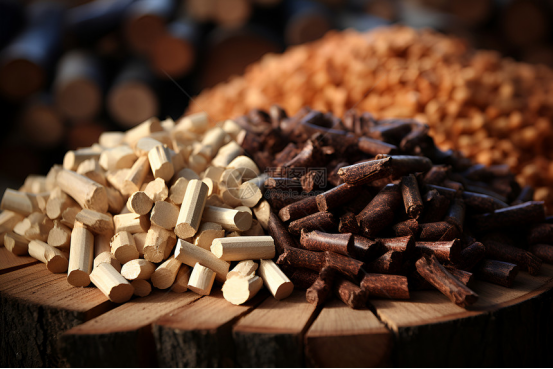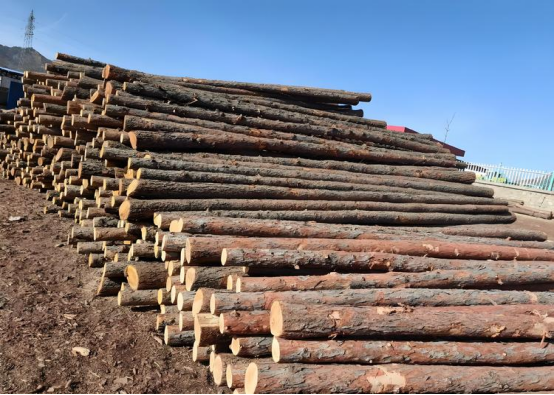Analysis of Calorific Value in Different Types of Wood Pellet Fuels
Introduction
Wood pellet fuels, produced using advanced biomass pellet machines, have gained prominence as sustainable energy sources due to their high energy density and low carbon footprint. The calorific value, a critical parameter determining energy efficiency, varies significantly among wood types. This article explores the calorific properties of common wood pellets, factors influencing their energy output, and the role of biomass pellet machines in optimizing fuel quality.

1. Calorific Value Variations in Wood Pellet Types
The energy content of wood pellets depends on the raw material's lignin, cellulose, and hemicellulose composition. Key findings include:
l Hardwood Pellets (Oak, Beech):
Hardwoods generally exhibit higher calorific values (18–20 MJ/kg) due to their dense structure and elevated lignin content. Their low ash content (<1%) further enhances combustion efficiency.

l Softwood Pellets (Pine, Spruce):
Softwoods offer slightly lower energy values (16–18 MJ/kg) but burn faster due to higher resin content. Their higher volatile matter (75–80%) supports rapid ignition, ideal for residential heating.

l Mixed Biomass Pellets:
Blending agricultural residues (e.g., corn straw) with wood can reduce costs but may lower calorific values. For instance, adding 12% tar as a binder increases pellet density (1.36 g/cm³) and durability, though impurities like ash may offset energy gains.
2. Factors Influencing Calorific Value
a. Moisture and Ash Content
Moisture reduces effective energy output, as evaporation consumes heat. Optimal pellet moisture should be <10%. High ash content (e.g., >5% in agricultural residues) also diminishes combustion efficiency and requires frequent maintenance.
b. Pellet Density and Mechanical Durability
Dense pellets (1.2–1.4 g/cm³) ensure prolonged combustion. Advanced biomass pellet machines apply 2–4 MPa pressure to enhance density while maintaining >95% mechanical durability.
c. Feedstock Preparation
Particle size (ideally <3 mm) and uniform mixing improve pyrolysis consistency. Screw extrusion technology in pellet machines ensures homogeneous feedstock compression.
3. Role of Biomass Pellet Machines in Energy Optimization
Modern biomass pellet machines are engineered to address feedstock variability and maximize energy output:
l Screw Extrusion Systems:
Adjustable compression ratios adapt to different wood types, balancing productivity (e.g., 358 kg/h for banana straw pellets) and energy density.
l Temperature Control:
Heating molds to 80–100°C softens lignin, acting as a natural binder. This reduces reliance on synthetic additives and improves pellet integrity.
l Emission Reduction:
Integrated technologies, such as oxygen-enriched combustion, lower NO and CO emissions by optimizing air-to-fuel ratios.
4. Case Study: Pine vs. Oak Pellet Performance
A comparative analysis reveals:
l Pine Pellets:
Volatile matter: 78.5%; Ash: 0.8%; Calorific value: 17.5 MJ/kg.

l Oak Pellets:
Volatile matter: 70.2%; Ash: 0.5%; Calorific value: 19.8 MJ/kg.
Oak’s higher lignin content ensures slower, steadier combustion, while pine suits applications requiring rapid heat generation.

Conclusion
Selecting the right wood type and optimizing pellet production with advanced biomass pellet machines are crucial for maximizing energy efficiency. Hardwoods excel in high-energy applications, whereas softwoods offer cost-effective solutions for quick heating. Future innovations in machine design and feedstock blending will further enhance the sustainability of wood pellet fuels.
About Biomass Pellet Machine
Rotexmaster’s Biomass Pellet Machine is a cutting-edge solution for converting diverse biomass feedstocks (wood, agricultural residues, and forestry waste) into high-density, energy-efficient pellets. Engineered with robust screw extrusion technology and adjustable compression ratios, it ensures optimal pellet durability (>95%) and calorific value (up to 20 MJ/kg). CE-certified and ISO-compliant, Rotexmaster’s machines feature intelligent temperature control, corrosion-resistant molds, and low energy consumption (<55 kw·h/ton). Ideal for both industrial and small-scale applications, they support global biomass energy goals by producing eco-friendly fuels with <10% moisture and <1% ash content. Rotexmaster prioritizes innovation, reliability, and 24/7 technical support to empower sustainable energy transitions worldwide.

About Shandong Rotexmaster Machinery Co., Ltd.
Shandong Rotexmaster Machinery Co., Ltd., established in 2013, specializes in manufacturing high-performance biomass pellet machines and auxiliary equipment. Their product line includes wood crushers, biomass pellet machine, and drying systems, certified by CE, ISO9000, and SGS. With a focus on R&D and global exports (serving markets in Europe, North America, and Southeast Asia), Rotexmaster’s machines ensure high pellet density (>1.35 g/cm³) and durability (>96%), making them ideal for producing energy-efficient wood pellets.
